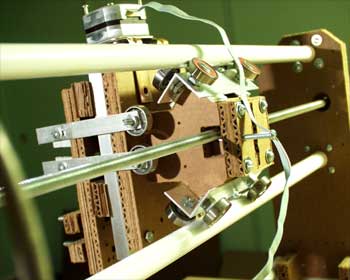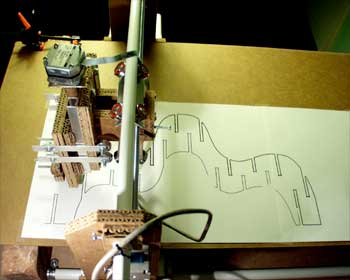|
Through this bright warm December, I slept through days, and spent nights with blades, glue and cardboard, trying to build machines.
sarrus linkage
linear motion from rotational motion
top and bottom surfaces stay parallel
and travel along same linear axis
foldable from 2D pattern
one hinge joint taped or glued together
Check out this machine built around this mechanism.
|
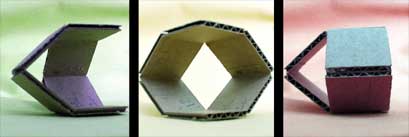
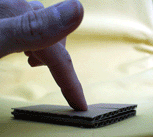
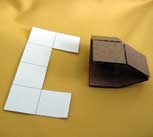
|
I'd like to have a machine tailored to cutting cardboard parts. While considering ways to feed a cardboard panel through a machine, the cardboard's structure was reinterpreted as mechanical components.
|
linear ledge guide/slides
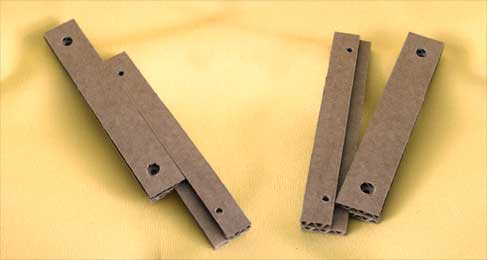
|
linear slide
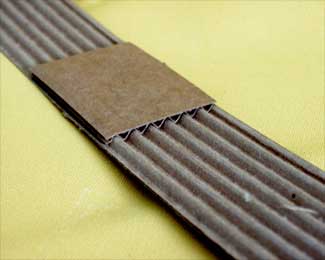
|
People have built working clocks and models of V8 engines out of paper and glue, and full scale bicycles and cars out of cardboard. What I have here is nothing - and I spent all month on it.
|
gear and rack
Strip off one face of the cardboard to expose the flutes.
File off the residual fuzz and glue.
Suddenly you have two mechanical components:
linear guides (as above) and gear rack.
Wrap the flutes around a disk to get a gear.
|
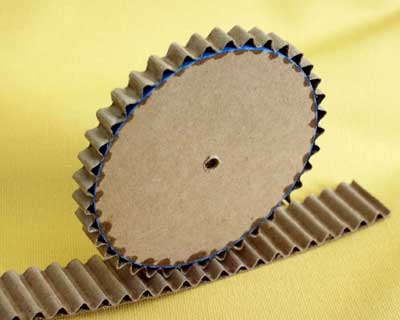
|
It should be possible to build some practical machines out of these components. The possibilies spread before the mind's eye - a horrible inventory of hazy concepts: cardboard clockworks, motion control systems, robots, vehicles. Each would be excessively "neat". But each is a colossal waste of time. I'm missing days of surfing for this? I'm broke and not even looking for work because I'm doing this? It's beautifully absurd, and frightening.
|
wheels + axle

|
cantilever
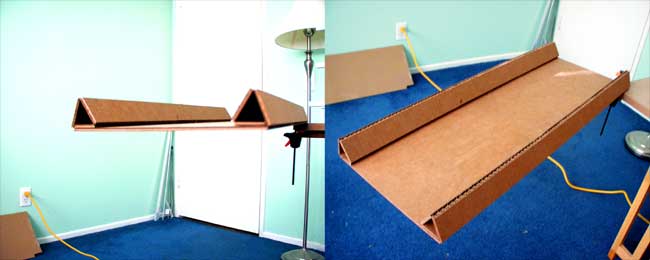
|
Did I just re-reinvent the wheel, and post a picture on the Web? Maybe I SHOULD have a Twitter account.
Late in the month, I'm looking at all these little cardboard components that I've wasted weeks on, and I'm asking, "what was it I was trying to make?" Oh yeah ...
|
cnc sharpie
A working 3-axis machine.
Though most of the mechanisms are metal,
most of the structure is cardboard.
The design is based on a very affordable plastic gantry router kit available from BLUUMAX CNC. I came vey close to ordering that kit, but figured it would be better to try to reproduce it, since I had many of the parts on hand.
The stepper motors were salvaged from broken printers. The power supply came from an obsolete computer. The white bars were beach umbrella poles that outlasted the umbrellas. There are enough skate bearings for two and a half skateboards - half used, half new. An old laptop controls the machine.
Threaded rod, some aluminium and lots of screws and nuts came from the hardware store for less than $50.
The most expensive parts were the stepper motor drivers - $30 each, from Makerbot Industries.
|
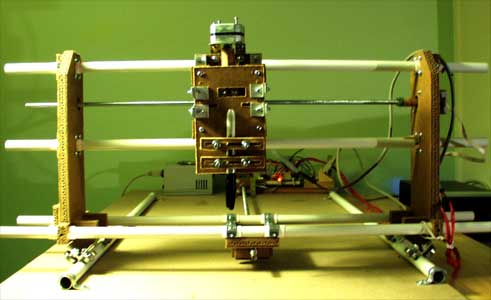
|
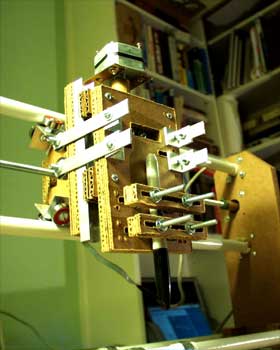
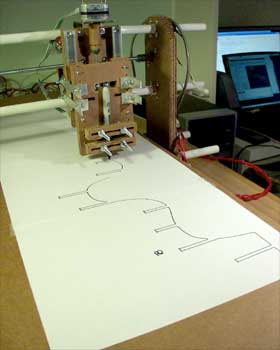
|
|
The main reason for building this was to get over the hump of building a first machine. I've wasted too much time sketching designs for something ideal without actually building anything. The possibilities and alternatives are so numerous. Copying a good simple design and ordering electronics, instead of soldering my own, enabled this first machine to come together.
|
Somehow this is still about surfboards.
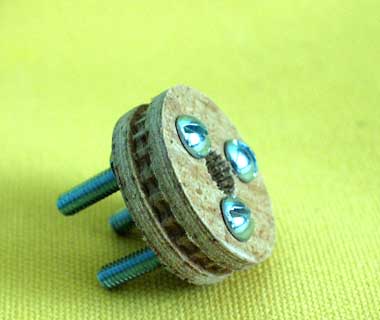
|
ball chain drive pully
ballchain as timing belt alternative
(idea from RepRap project)
three layers of hardboard
press fit over brass gear on salvaged
stepper motor from a scanner
|
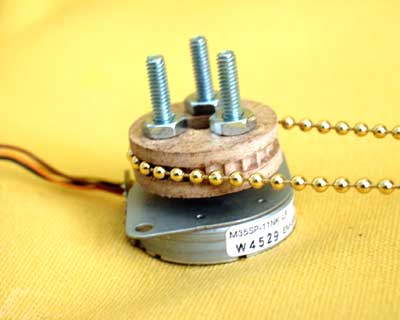
|
That was December.
done here
|











